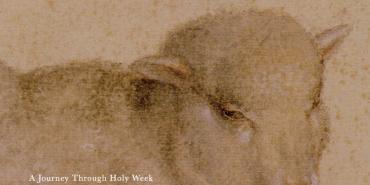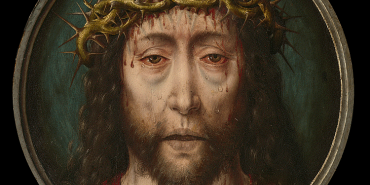The Tension of Being a Wesleyan Holiness People

As a Christian people formed in the mold of the Wesley brothers and the American Holiness Movement, we as the Church of the Nazarene feel the inherent tension of a binary heritage. This polarity pulls us toward two different contexts. One is firmly planted in 18th century England. The other arose out of the late 19th and early 20th century America. While our native Nazarene culture is strongly grounded in American revivalism, our theological roots are firmly planted in Wesley’s Methodism.
Until Nazarene Theological College in Manchester England began offering doctoral degrees through its association with the University of Manchester in 1992, those wanting a Ph.D. in the traditional Christian religious disciplines had to attend either a school from a non-Wesleyan denomination or one of the many Methodist universities available in the United States. Because of our Methodist theological roots, a great majority of the professors in the religion departments of Nazarene universities chose to attain their doctoral degrees from Methodist institutions. For the most part, this worked very well for the Church of the Nazarene.
However, some of the distinctive emphases of the American Holiness Movement are viewed by members of the Methodist religious academy as deviations from true Wesleyan theology and practices. Many of them believed the American Holiness Movement, though well-intentioned, was wrong-headed. Unsurprisingly, an effort was made to align the hearts and minds of Nazarene doctoral students with “true Wesleyan” perspectives and practices.
Several now claim that some of the traditional marks of the American Holiness Movement upon the Church of the Nazarene have been removed. One Nazarene professor in the 1980s went so far as to declare that the American Holiness Movement was dead. Perhaps his assessment has some validity, but many remain loyal to their American Holiness heritage.
There are, in fact, several people within the Nazarene denomination who continue to consider themselves as American Holiness people. The official Statement of Values for the Church of the Nazarene says, “We are a Christian people, a Holiness people, and a Missional people” [emphasis mine]. Large numbers of people within the denomination resonate with an emphasis upon preaching for a decisive moment of conversion and entire sanctification. They expect frequent worship services to end with altar calls. They persist in measuring church effectiveness by the number of first-time conversions and public testimonies of entire sanctification.
More recently, advocates for returning to a Methodist heritage have begun pulling the Nazarene institutional conversation even further back in history, asserting that Nazarenes should recapture the Wesley brothers’ Anglican roots regarding matters of worship and the practice of the sacraments. They are calling for the Nazarene Church to make normative infant baptism (removing baby dedication as an option), weekly administration of the Lord’s Supper, and structuring Sunday morning worship around the cyclical rhythms of the liturgy of the lectionary. In the view of Methodist heritage advocates, all three of these practices add foundation, substance, and a connection to the broader Christian church.
The focal point for constituents of the American Holiness Movement, on the other hand, remains firmly set upon two prominent pieces of sanctuary furniture: the pulpit and the altar. The early leaders of the American Holiness Movement had a tenacious conviction regarding three distinct decision points in the life of every Christian.
The first was a decision to receive Jesus Christ as one’s Savior from guilt and condemnation for personal acts of sin (justification). The second was the decision to embrace Jesus as Lord over one’s entire life and the crucifixion of the sinful nature (entire sanctification). In both cases, it was the act of “decision” and the miracle of divine transformation in a moment of time that was of highest importance. The path towards these two momentous decisions was by way of the Spirit-anointed proclamation of the full Gospel of Jesus Christ from the pulpit and a trip down a well-worn aisle from the pew to the altar. The third, and no less significant, element in the worship experience of the American Holiness Movement was giving public testimony about a personal experience of God’s transformative work at the altar.
For American Holiness Movement associates, the introduction of a liturgical style of worship, placing the Lord’s Supper as the apex of the service, and advocating infant baptism may be perceived as intrusions from high church traditions; traditions seen as outward acts of empty religious formality.
It isn’t hard to sense the tension between the poles of the American Holiness Movement and Wesley’s Methodist Anglicanism within the Nazarene denomination. This polarity has the potential to separate members, pastors, and congregations into adversarial factions. But there does seem to be a way to avoid taking sides.
What if we were to embrace the value of both streams of our identity without sacrificing either?
What if we chose to provide people with a multidimensional format of worship incorporating the practices of both poles of our identity?
While the revivalism of the American Holiness Movement has emphasized the beginning decision points of the Christian faith, the liturgical practices of Wesley’s Anglican Methodism offer the Christian disciple a place to develop an understanding of the riches of the entire Biblical witness, as well as a guided theological reflection on the text.
While John Wesley’s emphasis on the Lord’s Table offers people a tangible means for an encounter with the risen Christ via the symbols of bread and wine, the Holiness Movement’s emphasis on the altar provides the congregation opportunities to experience the immediate presence of the Holy Spirit via individual supplication and corporate intercession.
While the worship practices of the American Holiness Movement provide a place for individual believers to testify to the work of Christ in their lives, the Wesleyan-Anglican liturgical emphases connect the individual and the congregation to the depths and riches of historical Christianity and its corporate confession of faith.
The local church that can envelop both streams of our identity into the weekly worship experience will offer its participants a broader, more complete platform for growing into Christlike disciples. This fusion is possible, but it will require humility and an intentional preference for unity over the pursuit of polemical victories.
Chris May is lead pastor of the South Salem (Oregon) Church of the Nazarene.
Holiness Today, January/February 2018
Please note: This article was originally published in 2018. All facts, figures, and titles were accurate to the best of our knowledge at that time but may have since changed.




